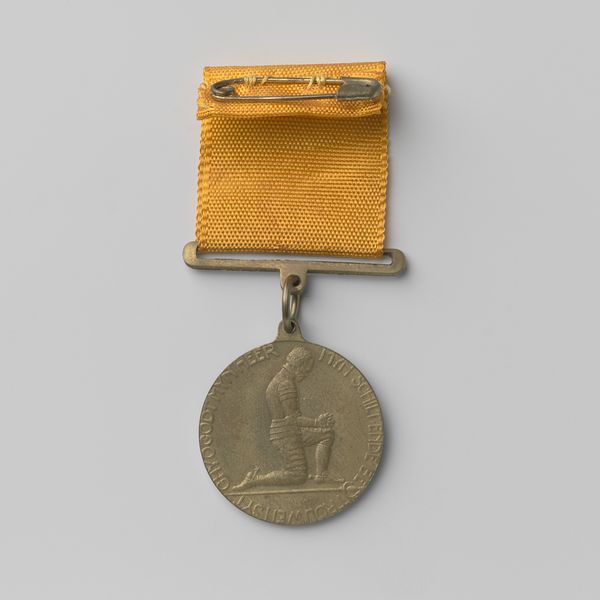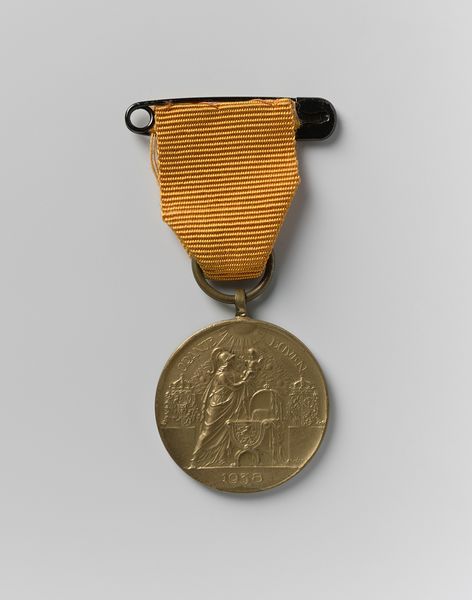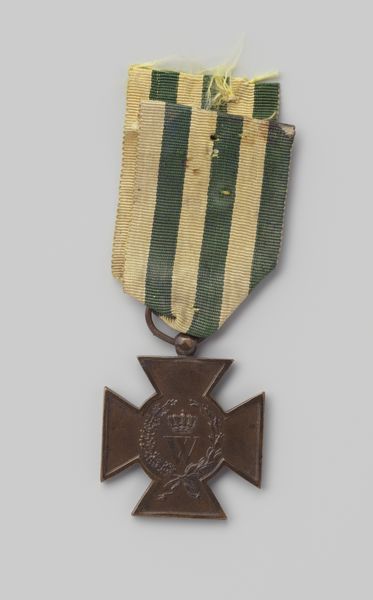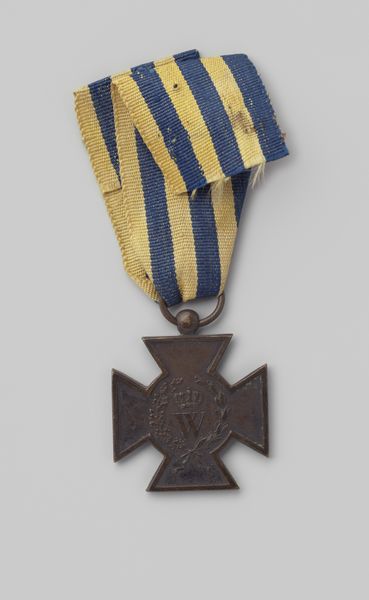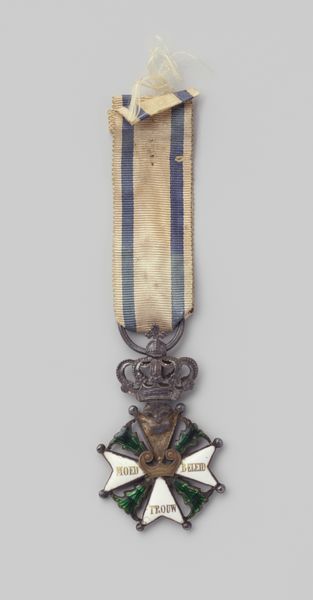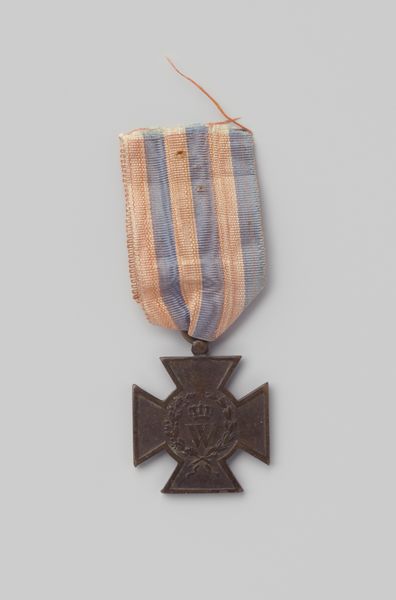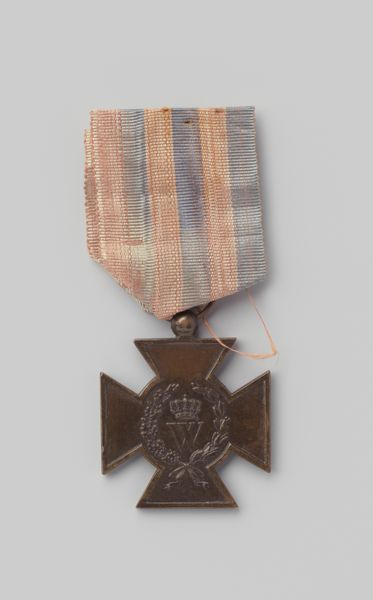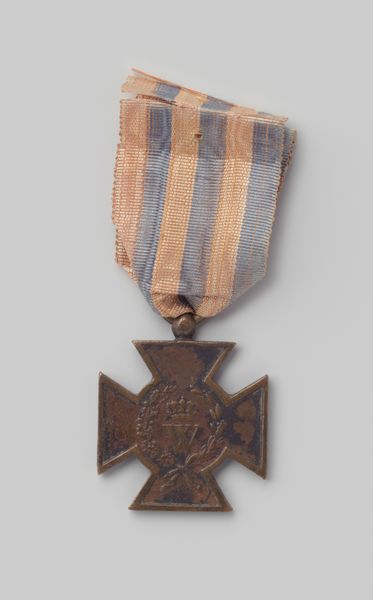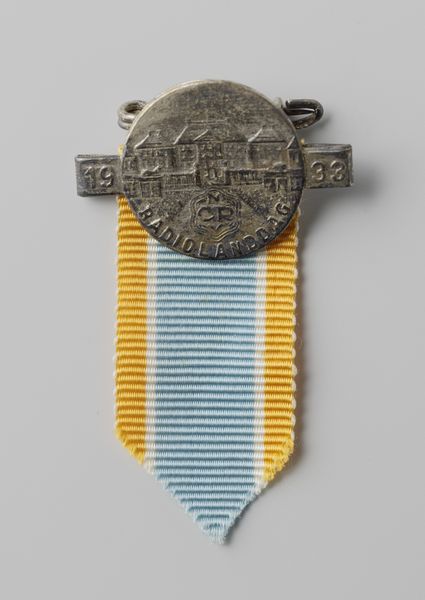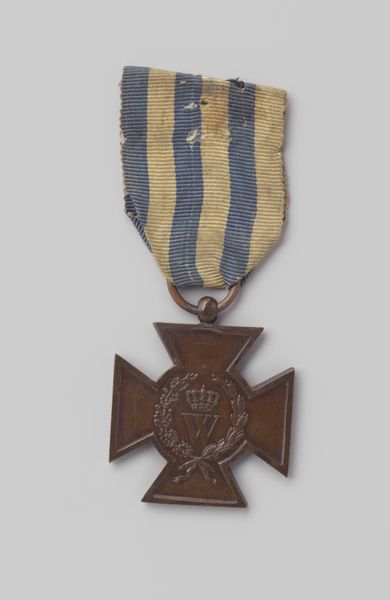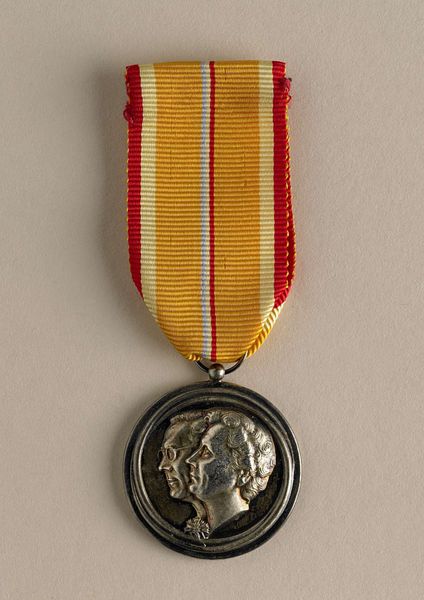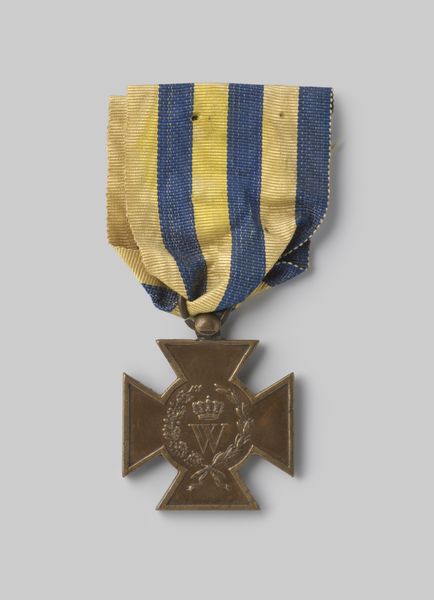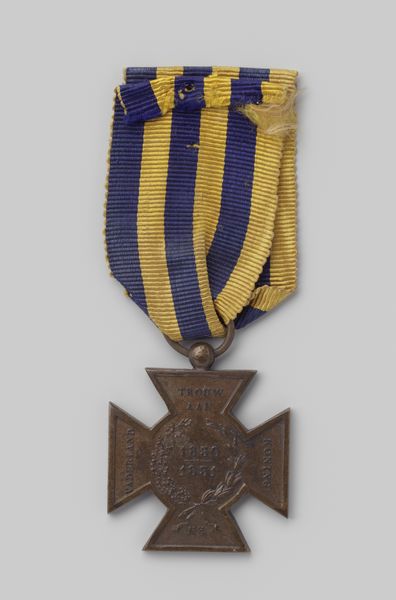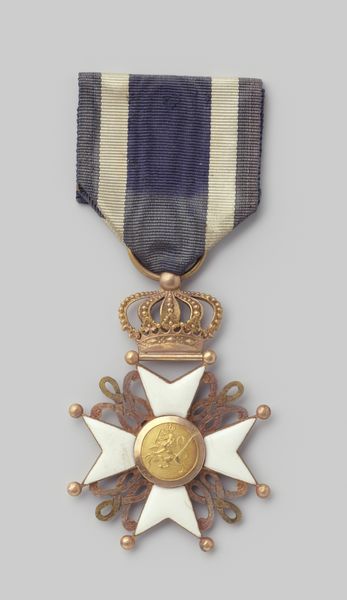
Draagpenning op het huwelijk van Prinses Juliana met Bernhard 1937 1937
0:00
0:00
johannescorneliswienecke
Rijksmuseum
metal, relief
#
portrait
#
metal
#
relief
#
history-painting
#
decorative-art
#
modernism
Dimensions: diameter 2.8 cm, height 3.3 cm, height 6.4 cm, weight 8.72 gr
Copyright: Rijks Museum: Open Domain
Curator: This is a commemorative medal celebrating the marriage of Princess Juliana to Prince Bernhard in 1937, crafted by Johannes Cornelis Wienecke. The metalwork showcases a detailed relief. It really exemplifies a blending of decorative arts and modernist sensibilities, especially in how accessible it would have been, produced en masse as a popular commemorative object. Editor: It's interesting, but it feels… muted. Not necessarily in a bad way. There’s something quietly symbolic about using this particular metal. There's something stoic about it that suggests something deeper than just celebrating a marriage; it acknowledges the weight of responsibility for the figures portrayed. Curator: Exactly, medals like these, although seemingly decorative, are quite strategic objects. It brings into focus not only the symbolic value, but also the industrial scale required for production and the implied access, distribution and ultimately consumption by the population, reinforcing a shared national narrative. Editor: Yes, that’s it. In the context of the time – the lead-up to World War II – the royal marriage would have been seen as a source of national unity. The medal, functioning as both symbol and object, would be disseminated among the populace and work to reinforce a particular, unifying, patriotic message at a precarious moment in history. Curator: Precisely, you are spot on to recognize that political agency, that intent. Now I wonder if Wienecke also was commissioned or had some sort of creative license and the conditions he was provided during that creative process. Editor: Good point. And whose labour went into producing these? This would speak volumes about how society was structured and which classes benefitted from royal celebrations. Perhaps an illusion when considering social classes? A way of temporarily uniting society for this significant historical milestone. Curator: This reading emphasizes how such objects acted as powerful social levellers while cleverly maintaining existing power dynamics. Examining the object beyond mere artistry and delving into modes of distribution enables us to examine how this type of historical document shapes our very own cultural memories of the events and figures they depict. Editor: Right. Seeing it that way, what first seemed like a quaint piece of metalwork is actually a potent historical artefact loaded with messages about nationhood, social order and royal authority, ready for people to re-assess for generations to come.
Comments
No comments
Be the first to comment and join the conversation on the ultimate creative platform.
